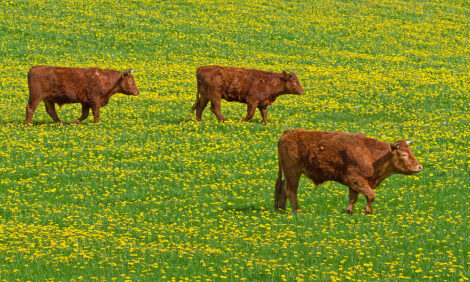



Feed Grain Prices Expected to Increase
CANADA - The Canadian Wheat Board has increased its price projections for wheat, durum, designated barley and feed barley, writes Bruce Cochrane.  Farm-Scape is sponsored by
Manitoba Pork Council and Sask Pork FarmScape is a Wonderworks Canada production and is distributed courtesy of Manitoba Pork Council and Sask Pork. |
The Canadian Wheat Board released its Pool Return Outlook for June last week.
Projected values are nine to ten dollars per tonne stronger for milling wheat, eight to ten dollars stronger for durum, about six dollars higher for designated barley and about ten dollars higher for feed barley compared to the May PRO.
Wheat Board market analyst David Boyes says grain values are being driven by unfavorable weather south of the border.
David Boyes-Canadian Wheat Board
The biggest factor by far over the last month has been the situation in the U.S. corn crop.
Late seeding combined with cool wet weather and excessive floods that most of your listeners will be aware of have caused real concerns about the size and quality of the U.S. corn crop.
The situation was already very tight with supplies in that crop and they needed a really good crop this year in order to alleviate the overall tightness.
They're not getting that and futures prices and overall cash prices for corn are sky rocketing in the United States.
This has provided a price floor for all of the wheat market and it's the main reason why we're seeing values higher this month.
Globally we're looking at a much larger wheat crop, forecasting a record wheat crop right now, 40 to 50 million tonnes higher than last year.
Over the last couple of months we've seen that large wheat crop weighing on wheat prices as wheat has traded on its own fundamentals.
But, now that the corn crop is where it's at, we're going to see more wheat being fed globally and that is going to soak up some of those excess supplies and as people are rebuilding stocks that will mitigate somewhat the effects of the record large wheat crop.
Boyes says, given the tightness in the U.S. with corn and soybeans and despite the expected record wheat crop, overall food supplies are still fairly tight and for that reason we can be looking at historically higher than average prices for the next year.
TheCattleSite News Desk


